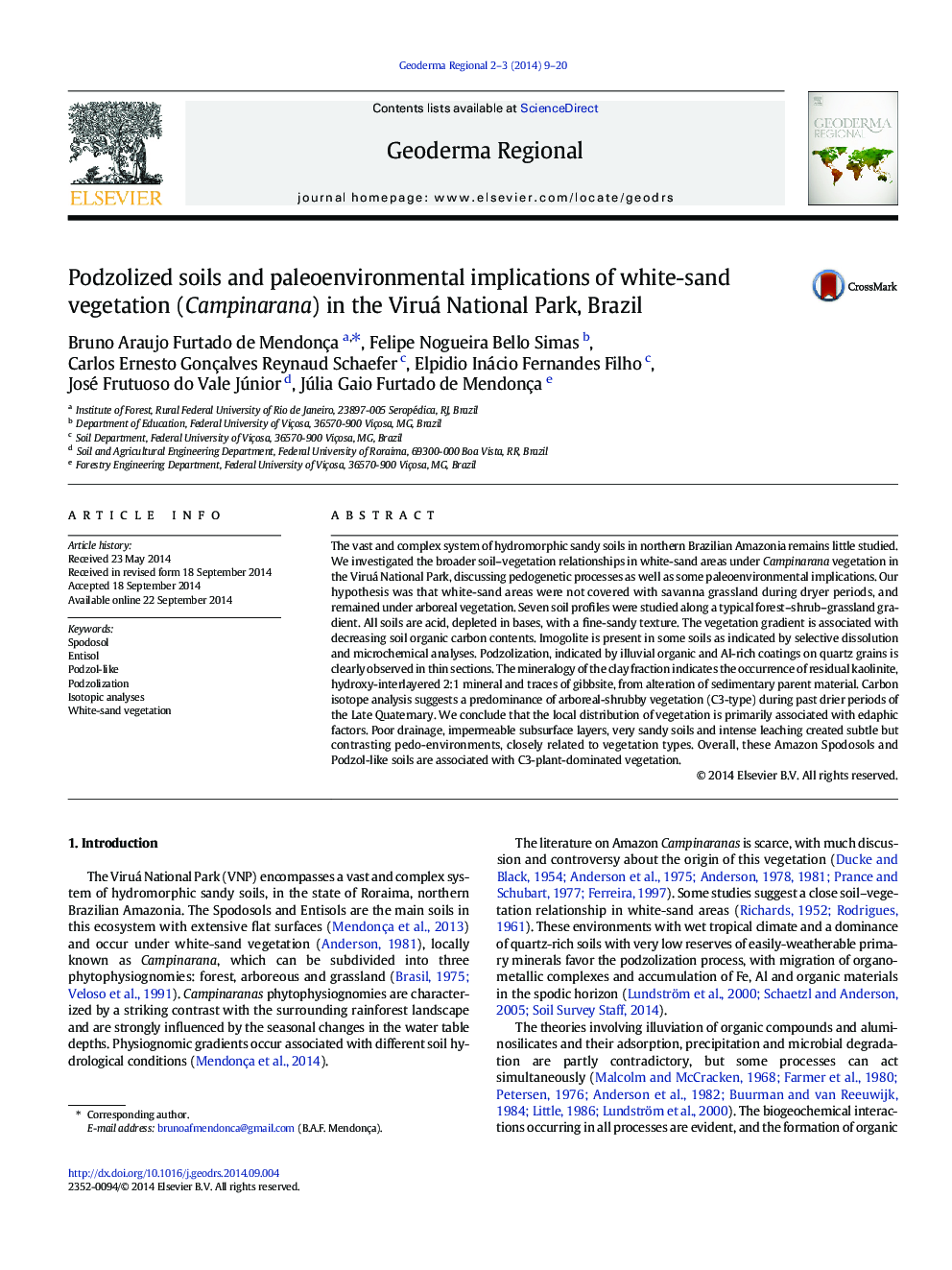| کد مقاله | کد نشریه | سال انتشار | مقاله انگلیسی | نسخه تمام متن |
|---|---|---|---|---|
| 4480807 | 1623012 | 2014 | 12 صفحه PDF | دانلود رایگان |

• Novel study on soil–vegetation relationships on white-sand areas, Brazilian Amazon
• Acidic, nutrient depleted, podzolized soils occur under Campinarana vegetation.
• Soil horizons with podzolization have colors that don't fit current spodic criteria.
• C isotopes show that C3-type vegetation prevailed in Late Quaternary dry phases.
The vast and complex system of hydromorphic sandy soils in northern Brazilian Amazonia remains little studied. We investigated the broader soil–vegetation relationships in white-sand areas under Campinarana vegetation in the Viruá National Park, discussing pedogenetic processes as well as some paleoenvironmental implications. Our hypothesis was that white-sand areas were not covered with savanna grassland during dryer periods, and remained under arboreal vegetation. Seven soil profiles were studied along a typical forest–shrub–grassland gradient. All soils are acid, depleted in bases, with a fine-sandy texture. The vegetation gradient is associated with decreasing soil organic carbon contents. Imogolite is present in some soils as indicated by selective dissolution and microchemical analyses. Podzolization, indicated by illuvial organic and Al-rich coatings on quartz grains is clearly observed in thin sections. The mineralogy of the clay fraction indicates the occurrence of residual kaolinite, hydroxy-interlayered 2:1 mineral and traces of gibbsite, from alteration of sedimentary parent material. Carbon isotope analysis suggests a predominance of arboreal-shrubby vegetation (C3-type) during past drier periods of the Late Quaternary. We conclude that the local distribution of vegetation is primarily associated with edaphic factors. Poor drainage, impermeable subsurface layers, very sandy soils and intense leaching created subtle but contrasting pedo-environments, closely related to vegetation types. Overall, these Amazon Spodosols and Podzol-like soils are associated with C3-plant-dominated vegetation.
Journal: Geoderma Regional - Volumes 2–3, November–December 2014, Pages 9–20